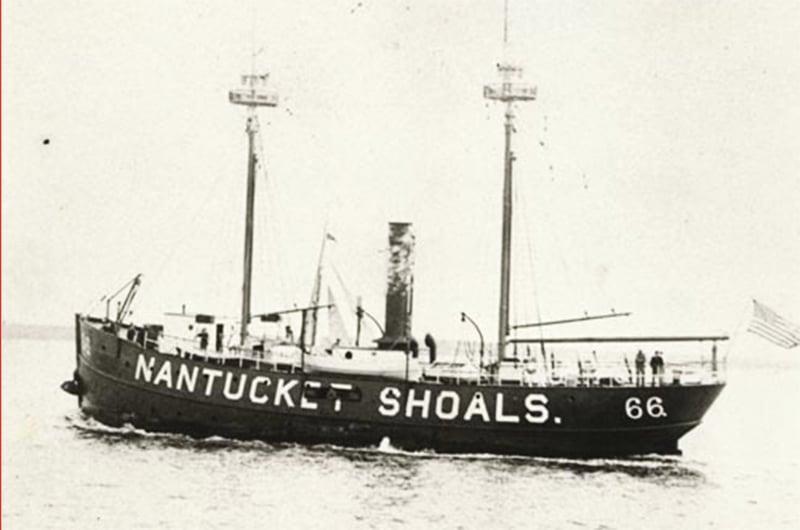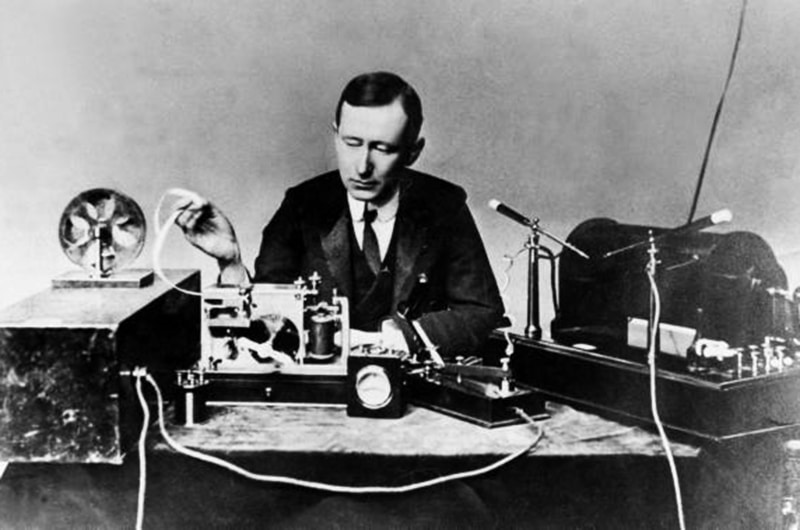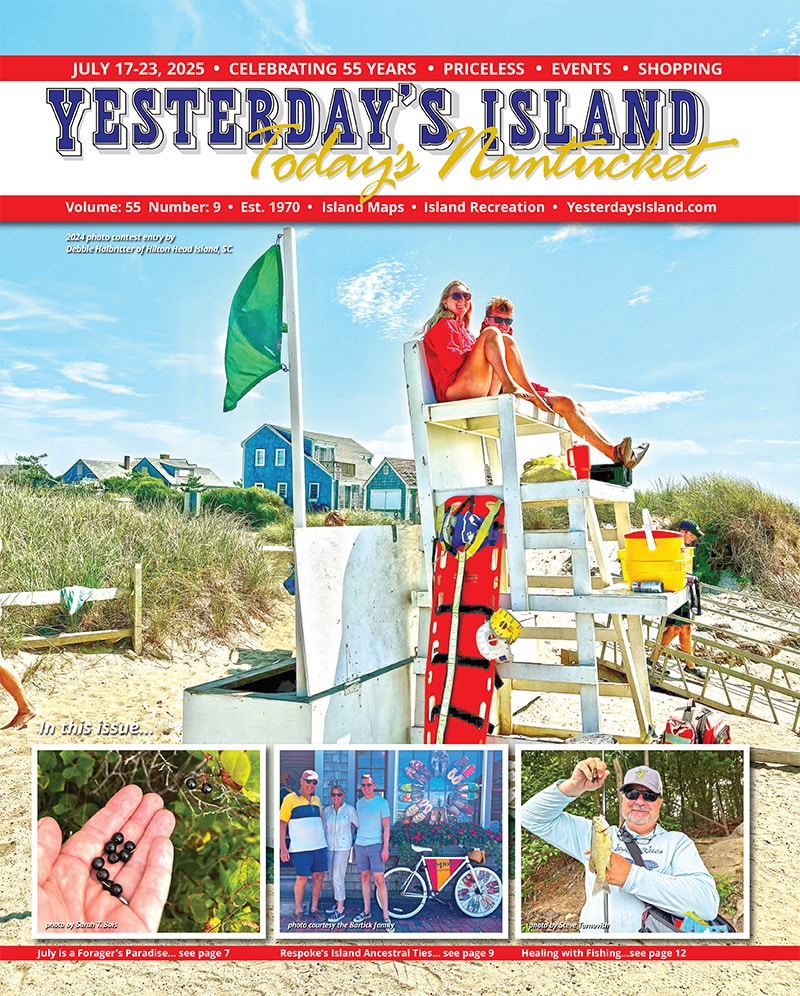~ by Amy Jenness ~

Siasconset’s new Marconi Wireless Station received its first signal from the Nantucket lightship on August 12 in 1901. The two crews established a connection and then the ‘Sconset station asked the lightship crew: “How are you all? What’s doing?” The lightship crew responded with the message, “Convalescent thanks. Foghorn going since last night.”
The wireless had been installed by the New York Herald to speed up the process of reporting the shipping news. The Nantucket lightship, located 42 miles southeast of the island, and ‘Sconset, on Nantucket’s east end, were both perfectly situated to communicate with the more than 250 ships passing daily. On August 16 the ship Lucania sent the first official message to the lightship, which was radioed to ‘Sconset, who then telegraphed it to the Herald’s New York office, who were watching for the Cunard ocean liner.
The message was, “All well on board. We are 237 miles from Sandy Hook. Expect to reach New York Harbor Saturday.” The first passenger message was from Carroll Payne to Clark Howell at the Atlanta Constitution: “Homeward bound. Passage rough. Though far from home, message sent thanks to the Herald’s enterprise.”
The Herald predicted that its Nantucket wireless stations would shorten a ship’s Atlantic crossing and that westbound passengers could communicate with the American continent hours earlier.
The newspaper’s predictions came true, but more importantly, the Marconi’s system very quickly resulted in safer boating voyages and provided the foundation for the radio and television broadcasting industry of the future. Two years prior Serbian-American inventor Nikola Tesla was negotiating with the office of the Light House Board to install his version of a wireless radio on the Nantucket lightship. But the conversation wasn’t going well.
In an 1899 letter, T. Perry, Commander U.S.N., wrote, ” from certain expressions used in it the Board fears there may be some misunderstanding, so in order to prevent you from going to any trouble to expense, the board desires to say that it has taken no action as yet providing any apparatus for using wireless telegraphy, as no appreciation is available for the purpose…” Letters between Perry and Tesla continued into 1900, with each side parrying for position on the issue of cost. Tesla’s letters often made him sound irritable and contradictory. Perry eventually offered Tesla the contract, saying the government preferred to use an American company, a veiled reference to the Italian Guglielmo Marconi. In the end the New York Herald beat Tesla and installed a Marconi system on the Nantucket lightship and in ‘Sconset. Historians view Tesla’s inability to gain a lightship contract as one of the major blunders of his career.

Tesla was a prodigy of Thomas Edison and his AC induction motor and transformer were licensed by George Westinghouse.
Another radio pioneer, Reginald A. Fessenden, travelled to ‘Sconset in 1901 on behalf of the U.S. Weather Bureau. Fessenden studied the new Marconi device and conducted experiments there so the government could establish of a wireless system on the Farallon Islands in the Pacific Ocean. The project was a joint venture between the weather bureau and the newspapers San Francisco Call and New York Herald.
Fessenden, considered the father of radio, was an inventor and head of the electrical engineering department of the Western University of Pennsylvania and worked under Thomas Edison at the time. Born in Quebec, Canada, he may have been the first to broadcast radio transmissions of voice and music. In his later career he received hundreds of patents for devices in fields such as high-powered transmitting, sonar, and television.
David Sarnoff, who created the broadcast industry for radio and television, apprenticed at the ‘Sconset Marconi wireless station around 1910. Sarnoff, a Belarusian-American was born in 1891. He immigrated in 1900 and went to work for the Marconi Wireless Telegraph Company of Americ. He rose from office boy to commercial manager, to president of RCA.
While at the Marconi Company, Sarnoff saw that radio technology had the potential to broadcast to masses of people, not just from one point to another. But his supervisors did not embrace the idea.
In 1919 the Radio Corporation of America (RCA) purchased the Marconi Wireless Company and Sarnoff tried to convince his new bosses that radio could be used to entertain the masses. Again they rebuffed him. Finally, in 1921 Sarnoff arranged to broadcast a heavyweight boxing match between Jack Dempsey and Georges Carpentier. More than 300,000 people listened and broadcast radio was born. Sarnoff’s stature rose quickly at RCA. In 1926 the company purchased a radio station and formed NBC.
The Marconi system on the Nantucket lightship was short-lived. In 1904 the U.S. Navy replaced it with another type of wireless radio. By that time almost every ship equipped with a radio used a Marconi’s and ship captains scrambled to re-establish radio communication with the Nantucket lightship, which in three years had become a vital necessity.
Marconi continued to operate a wireless station in ‘Sconset until 1923 when the station’s owner, Radio Corporation of America, closed the historic station for good. In 1914 the US government took over the station for an alleged violation of neutrality laws. In 1920, A competitor called the International Wireless Telegraph Company built a large station just south of Sankaty Golf Club. This third, short-lived station had the latest equipment and could communicate with vessels as far away as 1,800 miles.
Amy Jenness is the author of On This Day in Nantucket History.


